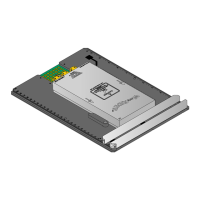182 WaveRIDER
Contact Lengths
Contact length is the product of conveyor speed and dwell time. Thus the % errors of
both must be added to determine the total maximum % error for contact length. To
determine the maximum error of contact length measurements, locate the measured
dwell time on the X axis of the graph and run vertically to the curve that is closest to the
measure of conveyor speed. Now run horizontally to the left and find the % error on the
Y axis. As you can see from this graph, conveyor speed has little effect on error as the
dwell times get much below 2 seconds. Typical errors range from 4% to 6% of the
actual dwell time depending on the conveyor speed and the dwell time.
Temperature Specifications
Absolute temperature accuracy is dependent on four basic factors:
1) The accuracy of the thermocouple sensor (T/C)
2) The accuracy of the Cold Junction Compensation sensor (CJC)
3) The accuracy of the overall Analog to Digital system (A/D)
4) The conformity to the International Practical Temperature Scale (IPTS)
Other factors could be mentioned here but they are either too small to be concerned
with or are “lumped” in with those mentioned above.
The maximum possible error for a given temperature reading is the sum of the errors
listed above. For the Wave Rider this maximum would be:
T/C ± 4
F + CJC ± 4.5F + A/D ± 0.3F + IPTS ± 0.1F = ±8.9F
This may seem extreme but it is the theoretical maximum error (see Specification in the
WaveRIDER manual). However, we calibrate each WaveRIDER to ±1.8F (1C) at
212F (100C) and 1832F (1000C). With conformity to IPTS at 0.1F and A/D error at
0.3
F, the practical maximum error would be (when using a traceable voltage standards
as the calibration source):
± 1.8
F + IPTS ± 0.1F + A/D ± 0.3F = ±2.2F
This leaves only the T/C error to deal with. The WaveRIDER uses “Standard Limits of
Error” T/Cs which have ±4F tolerance. Practical use of these standard T/Cs shows that
these tolerance limits are rarely approached. Tighter tolerance T/Cs can be used at
extreme cost, with a tolerance no better then ±2F. This small gain in accuracy is not
worth the extra cost, considering the temperature range being measured by the
WaveRIDER (<500F typically).

